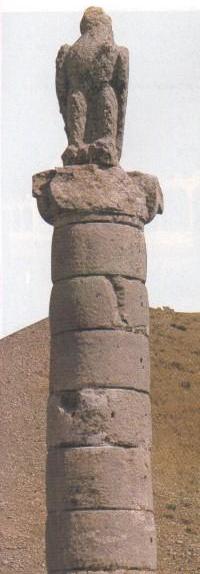| Around Kahta... |
|
Adiyaman's Archaeological Museum houses regional finds from the Lower Firat which date from the Neolithic and Chalcolithic
ages. Good - quality kilims woven in bright colors sell for reasonable prices in the bazaar. Surrounding monuments include
the ruins of an Abbasid citadel (restored by the Seljuks) and a 14th century Ulu Mosque. The discovery of an oil
in the region has brought prosperity to Adiyaman. Adiyaman and Kahta (which has good accommodation and camping facilities),
make good bases from which to visit Nemrut Dagi National Park. You can hire transportation in either town. On the summit of
Nemrut Dagi (Mount Nemrut), at an altitude of 2,150 meters - the highest mountain in Northern Mesopotamia - sits the
gigantic funerary sanctuary erected in the first century BC by King Antiochus I of Commagene. The engineering involved in
creating the artificial tumulus - flanked by terraces on which rest the colossal statues of Apollo, Zeus, Heracles, Tyche
and Antiochus-continues to amaze visitors. Time has inflicted heavy damage on the sculptures; their torsos sit with their
beautifully carved heads at their feet. At ancient Eskikale (Arsameia of Nymphaios) a magnificent relief depicts Heracles
greeting the Commagene king, Mithridates, in the ruins of what scholars believe might have been the Commagene Palace.
Opposite this site, separated by the Eski Kahta river are the remains of the Yenikale (New Castle) built by the Mamluks.
Other nearby sights include the Roman bridge at Cendere and another Commagene royal tumulus, Karakus. From Kahta you have
a choice of roads in all directions. To the north lies Malatya, an agricultural centre without tourist significance except
for the alternate route up "Nemrut Dagi"; and Divrigi, Sivas and Tokat, three towns important to the history of Seljuk
Turkish architecture. Adiyaman's Archaeological Museum houses regional finds from the Lower Firat which date from the
Neolithic and Chalcolithic ages. Good quality kilims woven in bright colors sell for reasonable prices in the bazaar.
Surrounding monuments include the ruins of an Abbasid citadel (restored by the Seljuks) and a 14th century Ulu
Mosque. The discovery of oil in the region has brought prosperity to Adiyaman. Adiyaman as well as Kahta (which has good
accommodations and camping facilities), make good bases from which to visit Nemrut Dagi National Park. You can hire
transportation in either town.
|
|

|






